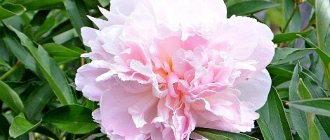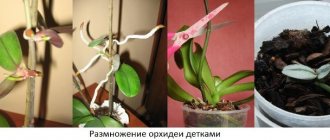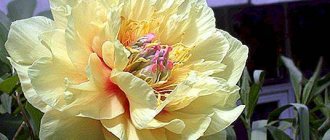The perennial, which serves as a symbol of the Celestial Empire, is planted in Europe and cultivated in Asia and North America. Peonies bloom in one place for decades. There are about 50 species of ornamental plants, which are unpretentious and quickly adapt to different climate conditions.
When peonies bloom, the garden is filled with a delicate aroma, and you can watch the stunning spectacle for a long time. Plants come in early and late varieties, both of which delight with beauty.
What factors determine the timing and splendor of peony flowering?
The first flowering of peonies can occur in different months - much depends on the timing of planting and the type of flower. Early varieties begin to bloom in May, the process lasts on average 3 weeks. Immediately after the early ones, mid-flowering varieties, interspecific hybrids, bloom. Late peonies in late June and early July delight with colorful buds until the beginning of August.
Important! If you take into account the flowering times of different varieties of peonies, you can always create a beautiful, lush, fragrant flowerbed.
Peonies bloom from May to August - it all depends on the variety and region
How to cover a tree peony for the winter in the Moscow region
With proper care, adult flowering shrubs are cold-resistant; they tolerate frosts down to -20°C. Plants can withstand temperatures down to -30°C, but only under good snow cover, since the tree peony overwinters in lignified branches (they are not completely cut off). If the stems are damaged by frost, it is only slightly; the plants quickly recover.
Preparing for winter
Let us highlight a few recommendations from experienced gardeners on how to properly prepare tree peonies for winter so that as many living buds as possible are preserved until spring. Watering is stopped from mid-October. Green shoots, weak and broken branches are cut off.
After leaf fall, all plant debris and old mulch are carefully raked, taken outside the site or burned.
Attention!
Removing old vegetation serves as additional protection against diseases and pests. During the growing season, they also keep the flowerbed clean.
The soil in the tree trunk circle is loosened to an average depth, while trying not to damage the roots. At the same time, it is advisable to check the acidity of the soil and, if necessary, add deoxidizers. Some sources advise scattering humus around the plant, but it is better to replace it with peat. You need to bring it in when digging, no more than a bucket for an adult bush.
Sheltering peonies for the winter
The soil in the tree trunk circle is mulched with dry leaves, straw or rotted sawdust, a layer of up to 7–8 cm. A tripod canopy is built over the young bushes, until about 2–3 years old, and wrapped in a breathable covering material (thick burlap is suitable) or spruce branches.
For mature, mature tree peonies, mulch is sufficient. It is advisable not to use pine needles for insulating the earth; such raw materials oxidize them.
What time do peonies bloom?
The crops grow in early spring, the growth period of the stems is about 40 days. Flowering time occurs 45 days from the start of the growth process. On average, buds remain attractive for up to 2 weeks, each flower for no more than 7 days.
Important! In hot weather, flowering is brighter, but quite fast.
Hybrid varieties will be the most unpretentious to grow
Super early
Super early varieties of peonies include American hybrids. They pleasantly surprise with a luxurious crown and terry buds. The most popular variety is Velma. Peonies bloom after planting for a month or two, this is approximately the end of May.
The delicate petals of super early hybrids bloom before anyone else
Early
At the beginning of June, the Pearl Placer blooms. Peony produces a large number of shoots that grow up to 90 cm in height. The petals are pearlescent at first, then become rich pink. After the Pearl Placer, the hybrid America blooms. The buds last for 3 weeks.
Early peonies are the main flowers of June
Medium flowering peonies
After the early varieties, the mid-flowering varieties take over the baton. Here the period shifts to June 15, flowering lasts on average until the 30th. Popular varieties are crimson Mirage, snow-white Duchess, spherical “daisies” Miss America.
Medium varieties bloom in the second half of June, but in regions with cold climates the timing may move to July
When do late peonies bloom?
On late varieties, the inflorescences last until the end of July. The varieties delight with the original shape of flowers, long flowering, and unusual color. Popular types are spherical Anchatresses with terry petals, lilac buds John Peyton, spreading Arkady Gaidar, spherical terry Gladys Taylor.
Late varieties of peonies are especially luxurious and rich-looking.
Peony differences
Peony can be used as an accent plant in the middle of the lawn. After all, its main feature is its beautiful appearance even after flowering. The decorative foliage is lush and turns purple in the fall.
Other plant differences include:
- some varieties reach a height of up to 1 meter;
- flower diameter – up to 15-20 cm;
- easily tolerates winter cold.
Are there peonies that bloom in autumn?
In Russia, this is unlikely, largely due to certain crop requirements for growing conditions and the early onset of cold weather. In Japan, some varieties bloom even in September. If you want to create a beautiful flower bed in the autumn months, you need to realistically assess the climatic conditions, provide proper care, probably shelter, and rely on late hybrids. In any case, peonies bloom very rarely in the months after August.
Important! Some gardeners “play” with fertilizers to get beautiful autumn plantings.
It is problematic to achieve autumn flowering of peonies in the Russian climate.
Caring for a garden plant for good flowering
The peony will bloom every year if you care for it properly:
- For ornamental bushes, soil moisture is important throughout the summer. Water two to three buckets per plant every two weeks during drought, monthly during wet seasons.
- Peonies need intensive nutrition with nitrogen and potassium fertilizers. The plants are fed along with watering and loosening. Fertilizers are applied in autumn and early spring. Among the organic fertilizers suitable for peonies are wood ash, mullein diluted in a ratio of 1:6, bird droppings - 1:12.
- Before the onset of winter, when the stems die, they are mowed down, leaving renewal buds at the bottom of the shoots.
During flowering, the small side buds are removed, which favors the appearance of large peonies that will decorate the area for a long time.
Peony flowering times depending on the variety
Peonies bloom at different times, much depends on their type. There are several main varieties.
Non-double ones are laconic and neat, semi-double ones have wide petals, a multi-row corolla and stamens arranged in a ring-shaped pattern. Japanese varieties come with only a couple (maximum) of outer petals, a center, and a corolla. The varieties that look most expressive are those in which the staminodes bend inward and form a characteristic “cushion.” The color may vary, but the species with a golden border are especially beautiful.
Anemone-like cultures are very beautiful, the buds contain large outer petals, with petalodes in the center (they are wider than staminodes, but shorter). A double flower has many wide petals. The pollen is sterile, so double species will not produce seeds.
All varieties of peonies are very beautiful, but they look and bloom differently
Important! The double group consists of semi-rose-shaped, rose-shaped, hemispherical, crown-shaped flowers.
The double flowers are luxurious, multi-tiered, their petals are large, wide, and in one row. Taking into account the height and strength of the stems, cutting, park, and universal varieties are distinguished.
How long do peonies bloom?
Since one planting blooms profusely for no more than a month (and more often - 2 weeks), you need to properly plan the planting time:
- early anemoid and terry varieties - June 5-14;
- terry and herbaceous medium - from June 15-19 to the end of the month;
If the flowerbed is large, you can plant a whole range of varieties
Causes of poor or scanty flowering
Peonies do not always please with a large number of balloons made of delicate petals with a unique aroma.
Diseases
The plant is resistant to pests, is not afraid of insects, but is affected by fungi, which when activated causes:
- rust;
- gray rot;
- verticillium;
- mosaic;
- powdery mildew.
The leaves of peonies become covered with plaque, stripes or spots and dry out. Even if the plant manages to produce buds, it blooms very sparingly.
Too acidic soil
Perennial needs large amounts of phosphorus and potassium. In order for a plant to please with its decorative appearance, it needs slightly alkaline nutritious soil mixed with humus. Peonies do not tolerate soil with high acidity; to reduce it, lime is added to the soil.
Lack of moisture
If an ornamental plant is planted in dry soil and not watered regularly, it will not be able to absorb nutrients from the dried soil. The buds that appear do not have enough strength to bloom profusely.
Improper care
Although peony is considered an unpretentious plant, it is necessary to take care of it - irrigate, feed, and prune. If this is not done, the perennial loses its decorative appearance.
Failure to comply with planting deadlines
When peonies are sent into open ground too late, the bushes freeze and it will take a long time for them to move away.
Undeveloped root system
If an adult peony is not properly cared for, the decorative flower grows, stretches upward, the buds become smaller and weaker, since the perennial lacks nutritional components, and the root system develops poorly.
Excessive pruning
To form a beautiful crown, peony shoots are shortened, but you should not be too zealous. The plant will not bloom profusely when it has few leaves, which is observed when cutting branches by a third.
What year does the peony bloom after planting?
The time when peonies bloom will depend on the age of the planting material and growing conditions. If the seedling was 3-4 years old, it is immersed in fertilized soil in the fall, flowers may appear a year later. Tree-like varieties delight owners with bright buds only 5 years after planting - peony blooms after this period, not earlier.
Important! According to the rules, after the first flowering, the buds are cut off - this way all the plant’s forces will go to the development of the root system.
The variety is taken into account. Early species release buds from the beginning of June, middle ones - closer to the middle of the month, late ones - in July. The total flowering period of the bush rarely exceeds 2 weeks. Whether the peony blooms quickly after planting or not largely depends on compliance with the rules of care.
Fertilizer application affects flowering times, but the variety itself is much more important.
Basic mistakes
A perennial does not bloom not only if the rules and timing of planting are not followed, or due to the lack of proper care, but also for other reasons.
Violation of the technological cut
Summer residents sometimes greatly shorten shoots to give the bush a beautiful shape. An ornamental plant does not have enough strength to form buds if there are less than 3 leaves on the shoot when cut.
Removing faded flowers but leaving petals
Pathogenic microorganisms provoke the development of diseases in which both shoots and greens dry out. Fungal spores and pest larvae thrive in the petals, so they need to be collected and burned.
Preservation of a large number of lateral buds
Although peonies are unpretentious plants, any mistake in care leads to the fact that the perennial loses its decorative appearance. The peony will not have enough strength for abundant flowering if you do not cut off the side buds, the development of which requires nutrients.
When do peonies begin to bloom in different regions?
Determining the exact date when plants will bloom is difficult, as it is influenced by a number of factors. The main ones are weather, climate, landing site. You also need to consider what year peonies of a certain type bloom.
The same species can bloom at different times in the middle zone and in the North of Russia
When do peonies bloom in the Moscow region?
The climatic conditions of the Moscow region are quite favorable. Peony begins to bloom in 1 or 5 years, depending only on the variety; early crops bloom from May.
In what month do peonies bloom in the middle zone?
The middle zone is also quite comfortable for growing crops. It is best to plant medium and late varieties that bloom in June. Tree varieties perform well in the middle zone.
Flowering dates for peonies in the Urals and Siberia
In the northern regions, the first flowering in July or even August is not uncommon. Winter-hardy mountain varieties that are not afraid of soil freezing perform best.
Which variety to choose
Until recently, the choice of varieties in our country was small, and they were simply called “pink”, “white”, “red”. But today popular samples are available to amateur flower growers - in total, about 5 thousand varieties are registered in the world. There are also masterpieces among domestic varieties.
Plants are conventionally divided into 3 groups: herbaceous, tree-like and hybrids. A photo of peonies attracts with the beauty of the flower’s shades, but it’s worth taking a closer look at other features. If the shape of the shrub is small (50 cm - 1 m), then it is a herbaceous variety. It grows every year thanks to new shoots. Trees are shrubs or subshrubs, and the stems do not die off in winter, but become dense like a tree.
Peony hybrids were developed through selection. In color and flower shape they resemble tree-like varieties. But their bush dies off in the winter - like herbaceous plants.
The types and varieties of peonies differ:
- coloring of inflorescences;
- flower size;
- flowering period;
- characteristics of the bush (size, shape).
If the priority is the beauty of flowers, you should pay attention to the “Nancy” variety. These peonies are super early and look pretty until frost. In the fall, "Nancy" looks great thanks to its brightly colored leaves.
An interesting choice is Philomel. Plants such as peonies are also popular in Japan, where this variety was bred. The outer petals of the flowers are soft lilac, the inner petals are pale yellow with reddish strokes. The bush is tall and grows quickly.
The variety “Coral Sunset” is also known. True to its name, when flowering changes from coral to yellow. Thus, on one bush you can see inflorescences of different shades.
Cutting rules
It is optimal to cut flowers at the bud stage - this way they will last longer than their fully bloomed counterparts. But with peonies you need to be careful - a completely green bud in a vase may not open.
The durability of the stems will depend on compliance with the cutting rules.
Important! The ideal time of day for cutting is early in the morning. The procedure is not carried out during rains.
A sharp knife is used to cut the stems; after the procedure, the injured parts are immersed in water up to the flowers so that the leaves and stems absorb the water. In industrial cultivation, flowers are sorted before packaging. Storage time largely depends on the freshness of the water and the quality of the material, but cut peonies still do not last long.
Proper care
Proper watering, soil cultivation, and fertilizing are important for peony. Watering is highly dependent on the weather. For example, if the summer is rainy, peonies do not need additional water - atmospheric moisture is enough. But if a hot and dry period has arrived, it’s time to take up the watering can.
How to water is also important: young roots are located 20-25 cm from the bush and even 40 cm (if the plant is young). To prevent water from spreading, a small ditch is dug along this period. It requires a lot of watering - 3-4 buckets per bush, every 7-10 days.
Even the watering period – evening – matters. Then the water will be absorbed and not evaporate. After each precipitation or watering, the soil must be loosened: near the stems - to a depth of 5-7 cm, a little further - 10-15 cm.
Planting and caring for peonies in the open ground requires taking care of support. This must be done before the plants flower. Requires supports made of thin pieces of wood or metal rods (with a loop at the top end). The supports should be placed approximately half a meter from the center of the bush.
After the peony stops blooming, regular care is important. The remains of the inflorescences are cut off. Moreover, several flowers should remain on the peduncle.
Some tips on how to prolong the flowering of peonies
A perennial may not form buds when it should, and if they do, they dry out quickly. The problem may be age (the plant is old), or improper growing conditions have occurred. It should also be taken into account that in the first year of life, the peony simply actively adapts to new conditions, grows stems, so there may be no buds. In most cases, missing flowers is not a cause for concern.
Flowers do not tolerate transplants well; if they are likely to occur, it is advisable to place a plastic bag with special holes in the planting container before filling the soil.
In order for annuals to bloom longer, you need to regularly pluck faded flowers, preventing seeds from forming. Annuals can be cut, leaving only 2-3 cm of the bottom of the stem, then watered and fertilized. In this case, re-blooming should occur by the end of summer.
Important! The regrown shoots on the sides bloom later than unpruned ones.
To delay the start of the flowering period, at the end of winter you can carefully rake the snow up to the bushes and compact it, and then pour a 5 cm layer of sawdust on top. They are removed in mid-May.
Experienced gardeners associate the complete lack of flowering with improper cultivation of crops. There are schedules for planting, watering, fertilizing - they should be strictly followed. Any deviations lead to undesirable results.
Main reasons: why don’t inflorescences appear?
Among the main reasons are the following:
- The landing depth was incorrectly determined. This is the most common reason.
- Wrong landing site. Peonies love sunlight. In the shade they are unlikely to please their owners with abundant flowering.
- Presence of old bushes. They prevent the growth rate of new flowers. It is best to separate part of the buds and plant them in a new place.
- Small divisions. If 1-2 buds sprout, the process will take too long. Try not to use divisions that have more than 5 buds. Optimally – 3-4 pieces.
- Frequent replanting. Optimally, let the flowers grow for about 5 years in one place. It is possible to occasionally transplant part of the kidneys.
What to do in low light conditions?
An important factor for the growth of peonies, as mentioned above, is sunlight. They grow in the shade extremely reluctantly. In this case, it is best to plant them:
- away from fences;
- on a small hillock or simply on a hill;
- under a canopy if it allows enough sunlight to pass through.
Important! In addition to light, this way solves the issue of ventilation. It is also very necessary for peonies.
Lack or excess of nutrients
First of all, peonies are demanding of moisture. They attract all the water from the soil to themselves. An insufficient amount will lead to the death of the plant. To avoid this, the following conditions must be observed:
- do not plant bushes next to birch trees, raspberries or lilacs;
- make grooves around the flowers at a distance of about 25-30 cm. Fill them with water;
- periodically loosen the soil.
Another problem is the soil. The poverty of the top layer does not allow the plant to receive minerals. Planting flowers deeper into the ground is the best solution.
Equally harmful is too much nutrition. As a result, greenery will grow, not buds. In addition, the risk of bushes becoming infected with fungus increases.
There were violations during landing
The most common violations are dark places and depth. Peonies do not require much penetration into the ground. The best option is from 20 to 45 centimeters (depending on the soil):
- if it is deeper, the peony will need a new root system to bloom;
- if closer to the surface, the kidneys will simply freeze or will not receive enough nutrition.
Requirements for seedlings and preparation of peonies
Planting material is purchased only at specialized sales points
It is important to carefully select seedlings so that they take root successfully and grow healthy in the future.
Recommended parameters for herbaceous peony seedlings:
- age – from 2 to 4 years;
- obtained by dividing an adult bush;
- the presence of 3-4 living ovaries on the surface;
- up to 25 cm long;
- good quality - light color, fresh.
It is unacceptable to take seedlings with dormant growth points - no amount of rehabilitation will bring them back to life.
Immediately before planting, it is necessary to prepare the purchased material to increase its immune capabilities. Basic preventive measures:
- Wash in warm water, dry on paper sheets.
- Remove putrefactive germs with a sharp instrument.
- Underdeveloped roots are removed.
- Disinfect by immersion in a solution of potassium permanganate.
- Keep in a solution of any growth stimulator for about 1 hour.
- Bare sections are treated with coal dust or ash.
- Dry in the dark for about a day.
Upon completion of all manipulations, the seedlings are ready for planting.
Dividing the bush
If it is possible to independently divide peony plantings, it is realistic to prepare seedlings from tree peony yourself. Shrubs that are at least 4 years old after flowering are suitable for this. It is necessary to have 6-7 healthy shoots growing at a distance of 6-7 cm from each other.
Divide according to the following scheme:
- By the end of the summer season or in early September, the bush is cleared of the leaf component and trimmed completely, leaving stumps 15 cm tall.
- Dig the root zone at a distance of 15-18 cm.
- Use a pitchfork to pry up the rhizome and carefully remove it. They wash it under a stream from a hose, then inspect it for the presence of putrefactive formations and violations of integrity. If defects are found, remove them with a sharp knife.
- Cut the bunch into several parts so that in each there are several living growth points and their own roots 7-10 cm long. They get rid of long and short root shoots.
- The blanks are kept for half an hour in dissolved potassium permanganate and for up to 6 hours in the root.
- After the allotted time has passed, the plots are dried and dusted with coal powder. It would not be superfluous to coat the lower part with clay mash, which will counteract fungal pathologies.
You can learn more about other methods of propagating peonies in our article.
Planting holes are dug in advance so that the soil has time to settle and be fully saturated with fertilizers.











